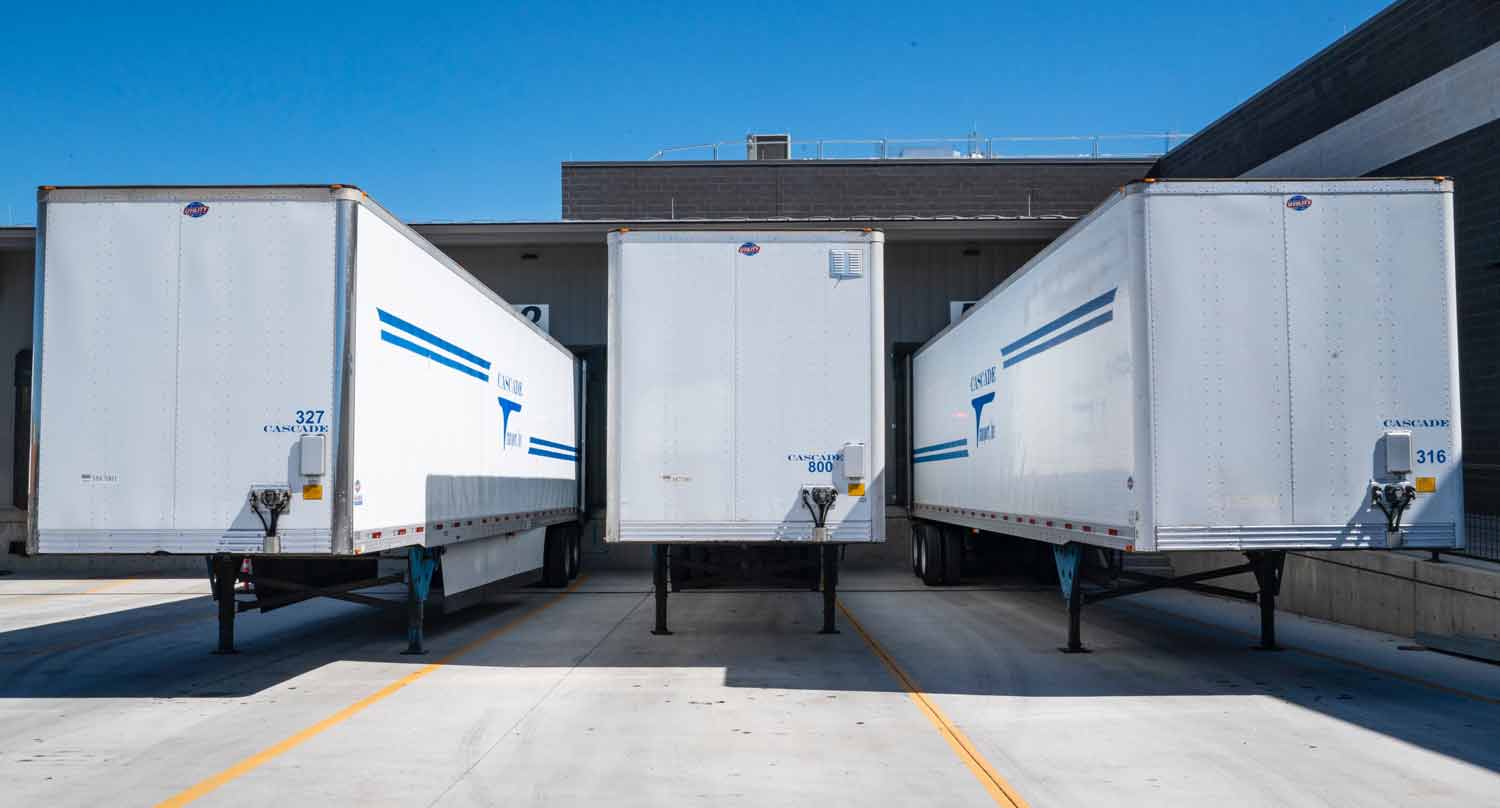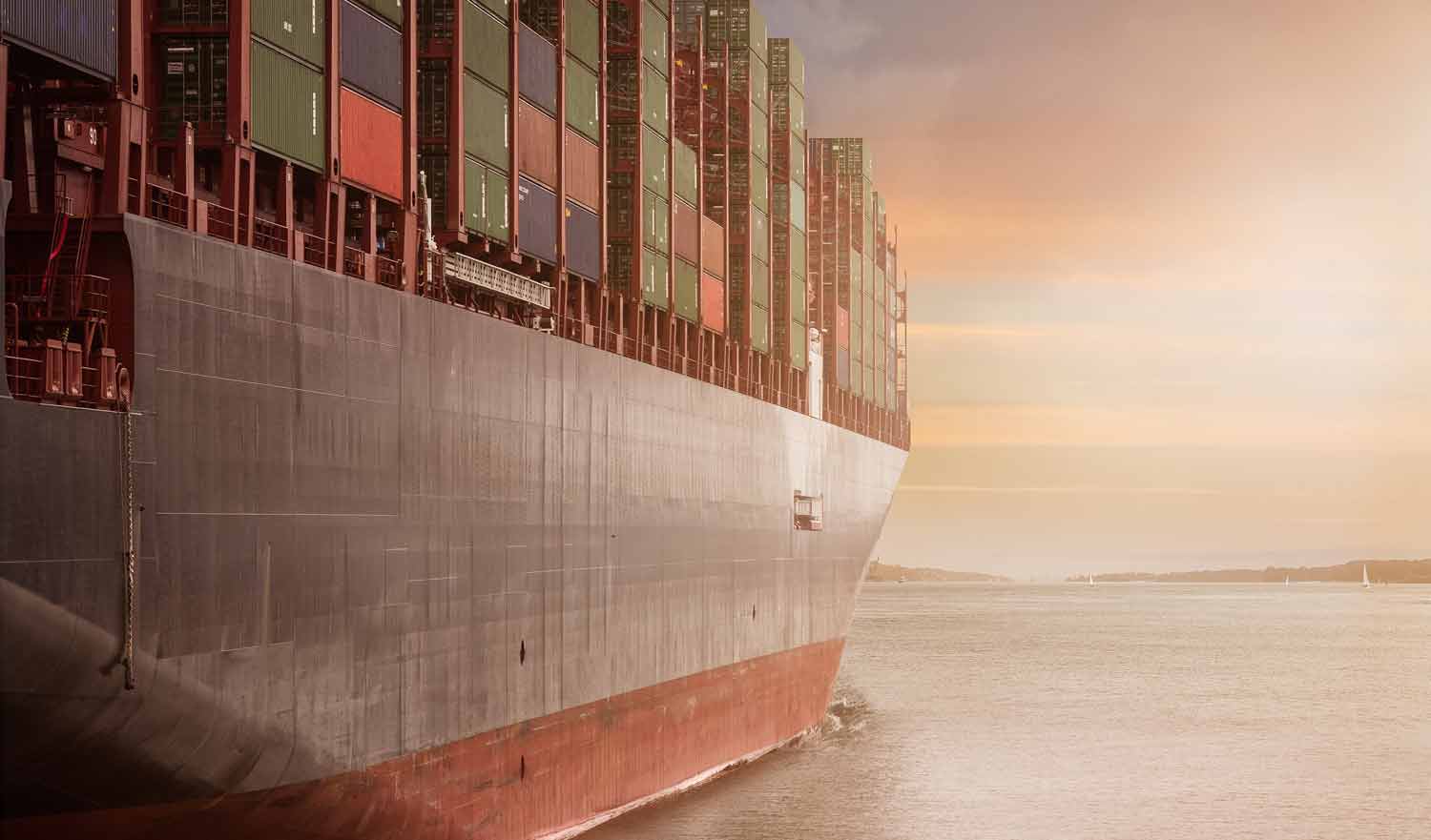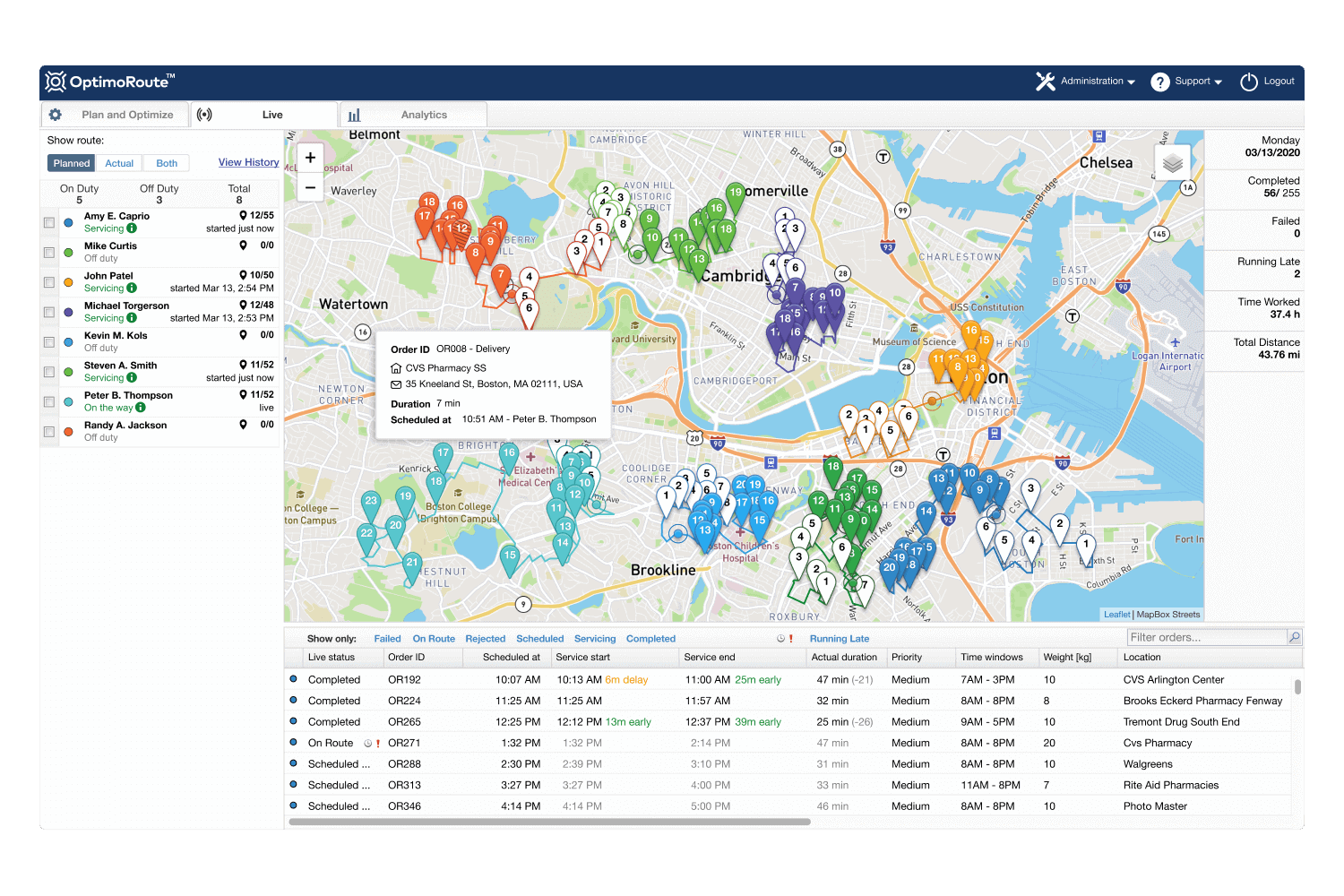Ecommerce Shipping Guide: How to Deliver More Efficiently While Saving Money
8 min read

Shipping is arguably the most important aspect of your ecommerce store. Why? According to Oberlo, the #1 reason people shop online is free shipping. And 54% of consumers under the age of 25 cite same-day shipping as the reason they purchase from a retailer.
This means your ecommerce business can’t grow if you don’t focus on improving your ecommerce shipping. The more you focus on shipping and delivery success, the more likely you’ll see the financial rewards as well as the benefits of customer loyalty.
In this article, we’ll go over how you can improve your ecommerce shipping strategy so you can efficiently improve your product delivery, reduce overall costs, and grow your bottom line.
What Does Ecommerce Shipping Look Like?
Ecommerce shipping is the entire process of getting products or items purchased from an online store to customers’ doorsteps. It includes the related stages of order receiving, order processing, and order fulfillment (which includes last mile delivery, a key aspect to improving your shipping and reducing overall costs).
It’s easy to confuse ecommerce shipping with ecommerce fulfillment, but the two are slightly different. Ecommerce shipping is only part of the larger process of fulfillment, which also includes the stages of receiving and storing your products in a warehouse or stock room, as well as handling any returned orders to your store. Essentially, ecommerce shipping only covers the processing, packaging, and successful delivery of orders to customers.
Since shipping is one of the key touchpoints a customer has with an online business, it plays a huge role in determining the customer experience. Shipping costs will also influence important metrics like shopping cart abandonment or average order value. So, the more cost-effectively you can ship, the better your bottom line will be.
8 Typical Methods of Ecommerce Shipping
Ecommerce stores send packages to customers using a variety of shipping methods. These are the most common ways online retailers ship to customers and the ones most customers have come to expect when shopping online.
Free
Consumers frequently expect free shipping when they place orders. You can realistically make this happen for your business, no matter your size, if you bake the cost of free shipping into the price of your products or if you require a minimum spend for each purchase.
This method can improve your overall shipping efficiency because you’ll have less weighing, measuring, and pricing to do across your store’s products. You can simply send the items out, knowing the shipping price is included or the minimum spend threshold is met, and move on to the next customer order.
Economy/standard
This is usually the most cost-effective shipping method offered by couriers for ecommerce stores. However, it’s often a slower method of delivery, so it’s best saved for items that aren’t time-sensitive. Some customers may be okay with this option if they want to save money and aren’t in a rush.

Flat-rate
Flat-rate shipping is a type of shipping where the cost doesn’t rely on the dimensions or weight of a product. Instead, the online retailer puts as much product into one flat-rate package as possible.
This method is typically offered by the USPS, but other shipping carriers do offer this option. Many ecommerce stores opt for flat-rate shipping because it’s a cost-effective way of getting more products delivered to a customer in a single shipment.
Same-day shipping
Same-day shipping either delivers a product to the customer’s location on the same day their order is placed or sends out a product the same day the customer ordered it. Most ecommerce stores will—and should—clarify which version of same-day shipping they operate on, so customers are aware of exactly when they’ll get their order.
This method is typically most cost-effective for larger companies like Amazon and Best Buy who have the infrastructure to support near-immediate shipments and deliveries.
2-day shipping
Thanks to Amazon’s standardization of 2-day shipping, retailers around the world are now offering (or trying to beat) this fast delivery option. For example, both Target and Walmart offer free 2-day delivery on select products across their online sites.
Like same-day shipping, this ecommerce shipping option may not be the most cost-effective until your brand has scaled to the point where you can afford the infrastructure necessary to maximize your shipping operations and consistently deliver items to customers.
Expedited
When customers need faster delivery of their orders, expedited shipping is the answer. This method puts priority on a package over slower solutions like economy or flat-rate and can even provide definite delivery times, so customers know exactly when their package will arrive. Expedited shipping is often delivered in the same time frame as same-day, overnight, or 2-day shipping.
Metapack found 27% of customers will choose another retailer if they have better shipping options, so offering expedited shipping can help you reduce chances of this happening and ultimately improve your revenue.
Hybrid
Hybrid shipping involves mixing and matching at least two different delivery services or providers to help your store handle, sort, and deliver products (for example, FedEx SmartPost or UPS SurePost). This method is a great ecommerce shipping option for online retailers because you can choose which services are best and most affordable for you.
For example, your ecommerce store could use FedEx for national deliveries but self-deliver local orders and save up to 53% of your total shipping costs. By taking on this role yourself and optimizing your last mile delivery routes, you save money and deliver more products, and customers are more likely to buy from you again and become loyal customers.
International
International shipping is simply defined as any shipping method (even the ones noted above) that transports and delivers packages outside of the online retailer’s domestic or regional shipping area. This usually happens between different countries but can also be across continents.
Freight shipping is the cheapest way to move packages from one part of the world to another and is especially useful for ecommerce stores that need to transport large orders of products from the country of origin to their home warehouses.
Seller’s Shipping Method
Aliexpress is often the ecommerce platform of choice for international customers, and one of the common shipping options on Aliexpress is called Seller’s Shipping Method. Typically, when you purchase from Aliexpress, your package will be shipped using one of the larger shipping carriers like China Post, Malaysia Post, or DHL. However, when a seller uses Seller’s Shipping Method it means that they are using a smaller Chinese-based courier to ship the package. This gives the seller more flexibility in finding a courier.
Because the couriers used in this method are smaller and based in China, tracking is only available until the package is exported from China. Seller’s Shipping Method is slower than other options like China Post or DHL, but it’s also cheaper and is typically used for lower value items where tracking is not as important.
Factors When Calculating Shipping Costs
Calculating the cost of shipping can help you create an ecommerce shipping strategy and fulfillment process that takes into account your overhead as well as your customers’ expectations. Consider these factors to help determine your shipping costs, which will also affect the price point of your goods.
Weight
How much does your package weigh? Most couriers will determine what to charge you based on actual weight or dimensional weight (i.e., the space a package occupies), whichever is greater. Dimensional weight could actually reduce the amount you pay for shipping if you pack efficiently.
For example, consider reducing your packaging size and materials or put two bulky but lightweight items from the same order into separate packages.
Size/dimensions
While dimensional weight is now the norm for many couriers, some may still charge you based on the size or dimensions of your package. Generally, the larger a package is, the more expensive it will be to ship.
Destination
How far your package has to travel also determines shipping costs. This is especially true with international deliveries that could include customs, tariffs, and other related charges.

Delivery method/time
Your shipping costs are also determined by which delivery method and shipping speed you select. Additionally, this method will impact the time of day your item will be shipped and delivered. Requiring more custom methods and delivery times will likely increase your costs.
Insurance & tracking
Don’t skip over these important areas, even if it means you might pay more for shipping. This is especially true when it comes to tracking services because roughly 83% of shoppers want regular updates about their purchases.
Bulk
When your ecommerce store sells large quantities of items, take into account bulk pricing. The more items you plan to ship at once, the more likely you are to get a shipping discount from couriers.
Profit margins
Of course, your overall goal should be to take into account your profit margins. What can you afford to ship speedily without losing money on shipping? Don’t forget to factor in any taxes and fees, as well.
Emergency budget
Finally, it’s important to always factor in some extra cost per shipment to help you cover emergencies during your delivery process (for example, a package might be delayed due to weather). The extra financial room will help you better offset shipping costs during and after the unexpected.
You can calculate all this yourself or turn to 3rd-party logistics (3PL) companies, shipping platforms, or major carriers’ calculators. For example, special circumstances like COVID-19 will impact the price of shipping and how and when products are delivered to customers.
How to Create a Top-Notch ECommerce Shipping Strategy (While Saving Money)
Now that you know what ecommerce shipping options are available and how to start calculating your costs, complete your shipping strategy by following these steps:
- Select and source packaging
- Use smaller packaging to save money on dimensional weight fees.
- You can also consider reusing packaging where you can as another way to reduce costs.
- Set up insurance and tracking options
- Make sure insurance will properly cover the cost of the shipment.
- Provide tracking information to the customer and update it frequently.
- Package and label your products
- If it’s cheaper for you to outsource this process, consider making that transition.
- You can also make your own labels or use technology from a vendor/shipping platform.
- Ship and deliver the product to the customer
- Optimize your delivery routes for the best last mile options with a solution like OptimoRoute.
- Reevaluate your shipping partners/processes on occasion to make sure you’re still optimized and saving money.

Top Ecommerce Shipping Solutions
When you need a headstart or want to rework your ecommerce shipping strategy, you should look for solutions to help boost your shipping process and overall efficiency. Consider these commonly used software and platforms:
Shipping platforms
- Stamps.com
- Shipstation
- Shippo
- Orderhive
- ShippingEasy
- EasyShip
- Shopify Shipping
- ShipRush
- AfterShip
- Shipware
- Sellbrite
Order fulfillment
Last mile delivery
Ecommerce Shipping Done Right Saves You Money and Delights Customers
An optimized ecommerce shipping strategy, especially one with an efficient last mile delivery system, isn’t just good for your business in the short term. If anything, top-notch ecommerce shipping will make your business more profitable over the next several months and years, and you’ll also see happier customers thanks to a positive shipping experience.
Ready to improve the last mile delivery portion of your ecommerce shipping process? Try OptimoRoute free for 30 days.
Try OptimoRoute™ for Free
No installation or credit card required


